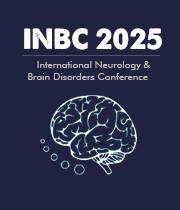Title : Cognitive impairment predicts major arrhythmic events in heart failure via central autonomic network hypometabolism: A brain-heart axis study
Abstract:
Background: Epidemiological evidence links cognitive impairment (CI) to poor prognosis in patients with heart failure with reduced ejection fraction (HFrEF). Given the interconnectedness of CI and the autonomic nervous system (ANS), both regulated by the central nervous system, this study investigated the relationship among cognitive function, metabolism in ANS-related brain regions, and major arrhythmic events (MAEs) in HFrEF.
Methods: We retrospectively enrolled 73 patients (age 58.0 years [IQR: 49.0-64.5 years], 67 men) with HFrEF who underwent gated myocardial perfusion imaging, brain 18F-FDG positron emission tomography/computed tomography, and cognitive testing. The brain glucose metabolism activity was analysed by SPM12 software. Cognitive function was assessed using the Mini-Mental State Examination (MMSE), CI was defined as MMSE ≤ 26.
Results: The median follow-up period was 3.0 years (IQR: 1.04-3.57 years), and 12 patients (16.4%) experienced MAEs. 10 (13.7%) patients had a prior arrhythmia history. Compared to patients without prior arrhythmia, those with prior arrhythmia exhibited a longer QRS interval, higher MMSE score, and reduced metabolism in the bilateral lingual gyrus, right heschl gyrus, and right middle temporal gyrus (all p < 0.05). Compared to patients without MAEs, those with MAEs had a prolonged heart rate-corrected QT (QTc) interval, higher MMSE score, and lower metabolism of the left lingual gyrus (all p < 0.05). Significant correlations were found between cognitive function, QRS and QTc intervals, and metabolism in ANS-related brain regions (all p < 0.05). Patients with CI displayed a prolonged QTc interval and hypometabolism in the left hippocampus, bilateral caudate nuclei, and left superior temporal gyrus (all p < 0.05). Multivariate Cox regression analysis found that CI was an independent predictor of MAEs in both the overall cohort (HR [95%CI]: 12.039 [3.079-47.067], p < 0.001) and in patients without prior arrhythmia (HR [95%CI]: 13.718 [2.651-70.985], p = 0.002), with Kaplan-Meier curves indicating a lower MAEs event-free survival (all p < 0.001). However, this association was not observed in patients with a history of arrhythmia (all p > 0.05).
Conclusions: CI can independently predict MAEs in HFrEF patients, particularly those without prior arrhythmia, and is associated with hypometabolism in the central autonomic network and the left ventricular electrical dyssynchrony. These findings highlight CI as a potential early marker for emerging arrhythmic risk, supporting the use of cognitive screening for risk stratification in patients with HFrEF.



